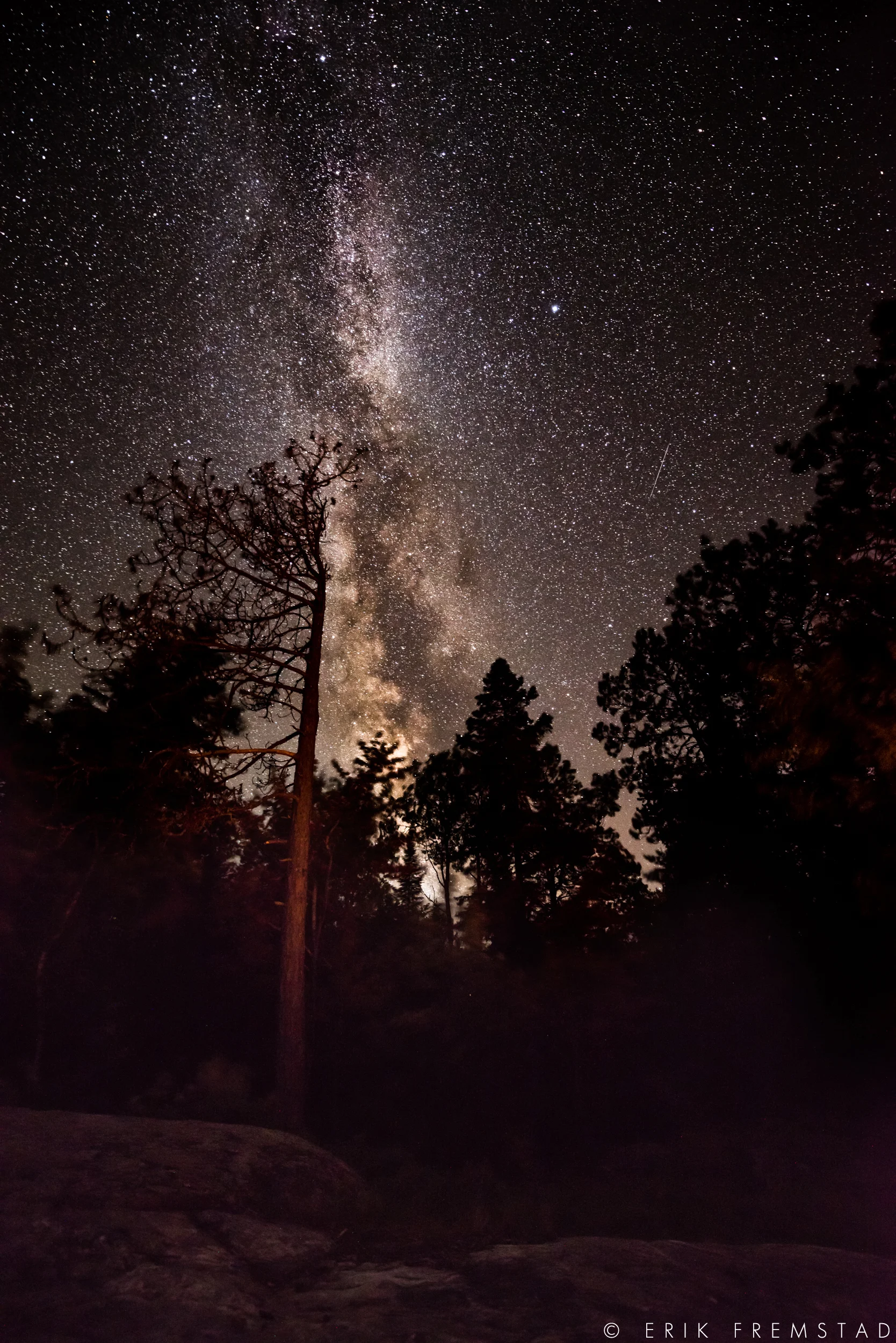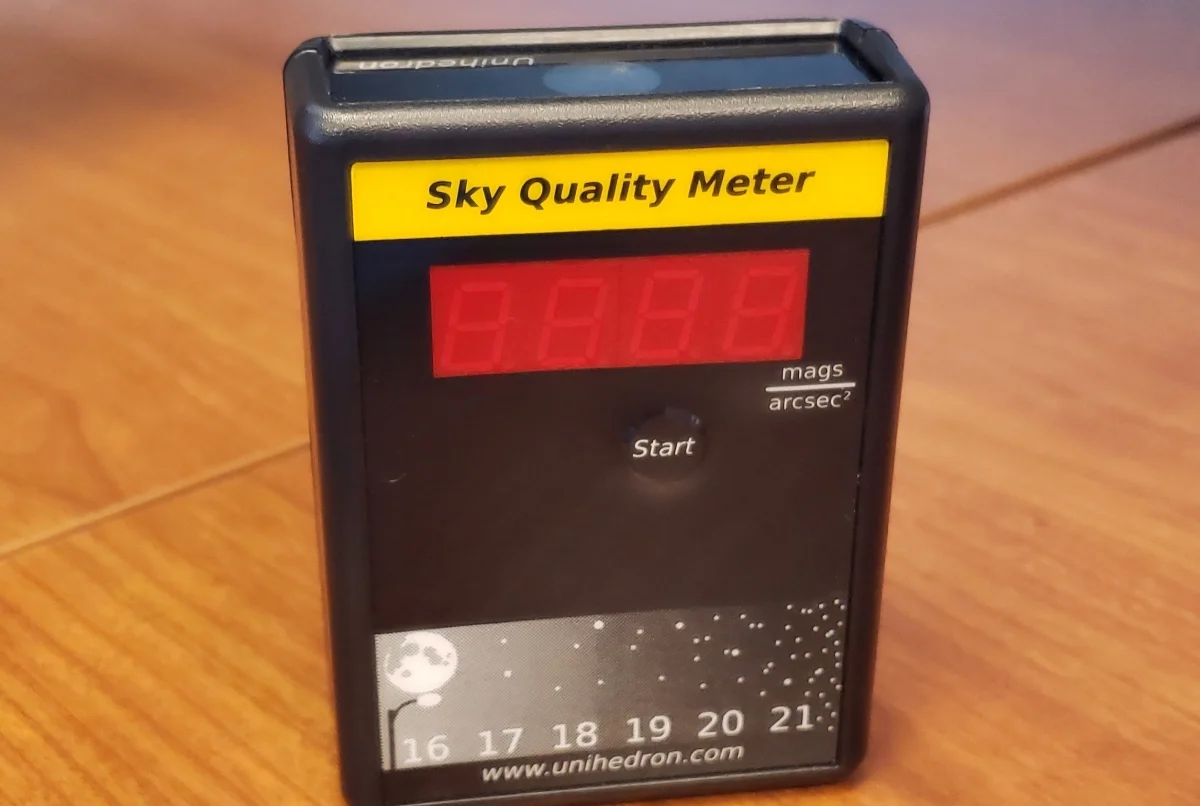Notes From the Field: Starry Skies
Erik Fremstad
Summer at Voyageurs is in full swing! With a tornado touchdown, ripening blueberries, and plenty of fun events going on, it’s been a busy summer so far. But one of the coolest things happening at Voyageurs right now is that the park is in the process of applying for certification from the International Dark-Sky Association. During the new moon at the end of July, VNPA got a sneak peek into the process. At 11pm on a clear night, we headed out into the park with Ashley Wilson, the park’s dark sky intern with the Future Park Leaders of Emerging Change program, and Cynthia Lapp, from the organization Starry Skies Lake Superior. The Milky Way was spread out overhead and every so often we caught a glimpse of one of the Perseid meteors shooting by. But we weren’t there just to stargaze. Armed with a device called a Sky Quality Meter (SQM) and a special camera, we visited each of the park’s three visitor centers to measure and photograph the night sky.
The SQM measures the amount of light that strikes its sensor, which means that it tells you just how dark the night sky is. The darker the sky, the less light pollution and the more stars you can see. To use the SQM, you hold it up with the sensor pointing at the sky directly overhead and press a button. It takes a few moments to accumulate light particles, then displays a value measured in units called magnitudes per square arcsecond. Larger measurements indicate darker skies, with a value of 22.0 representing the darkest sky possible. One of the requirements for becoming an International Dark Sky Park is that this value has to be at least 21.2. We were regularly hitting values higher than this!
As the application process continues, we’re excited to share more with you about these efforts. Follow us on social media, where we’ll soon be posting some of the photos taken during this outing. If you want to try your hand at doing some dark sky measurements yourself, wherever you are, your smartphone can help! Apps such as Loss of the Night walk you through the process of measuring sky brightness using your eyes to identify which stars are visible. Your phone will submit a sky brightness reading to a citizen science database, where your efforts will contribute to how we understand light pollution.
Links to Learn More:
By: Lindsay Brandt


